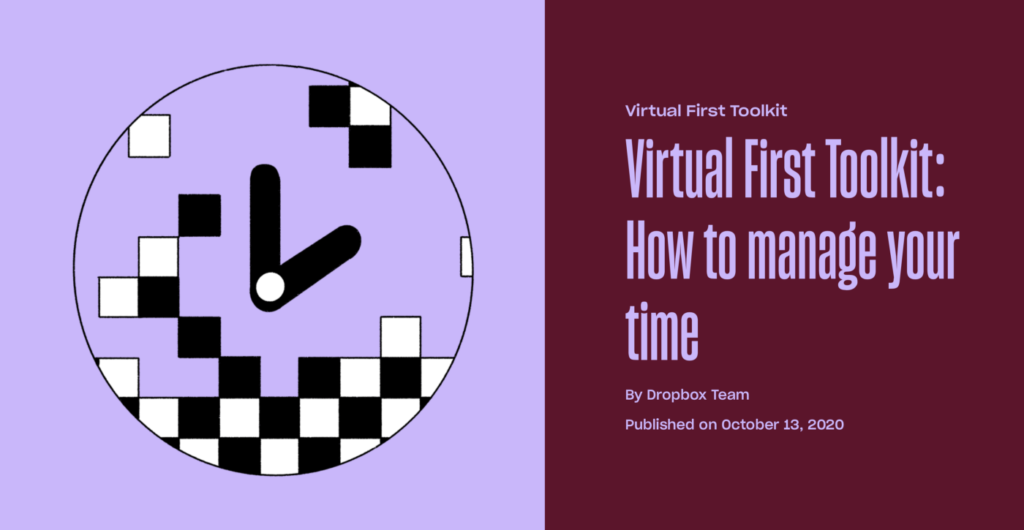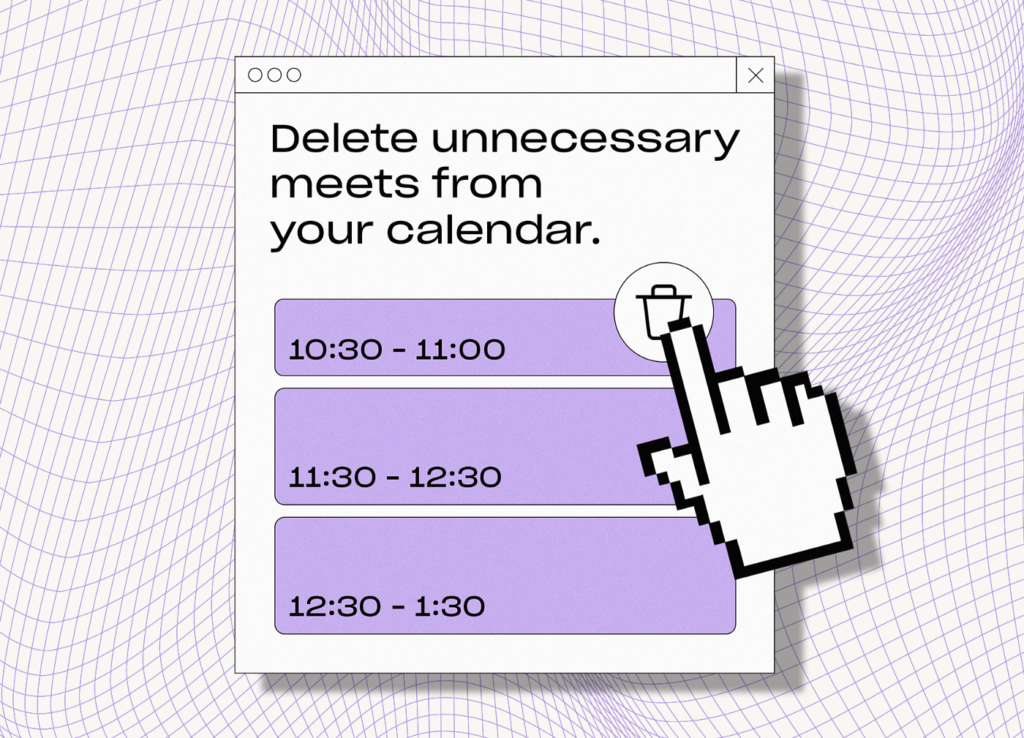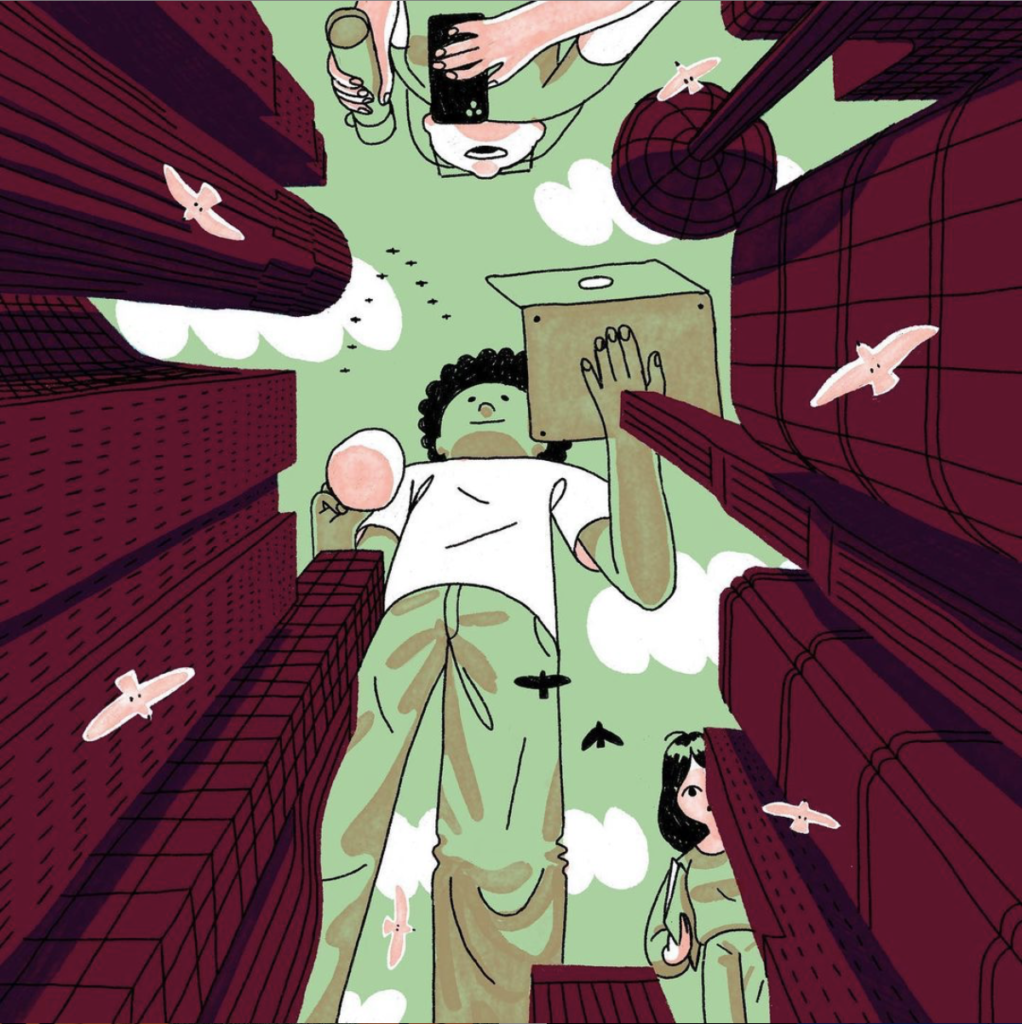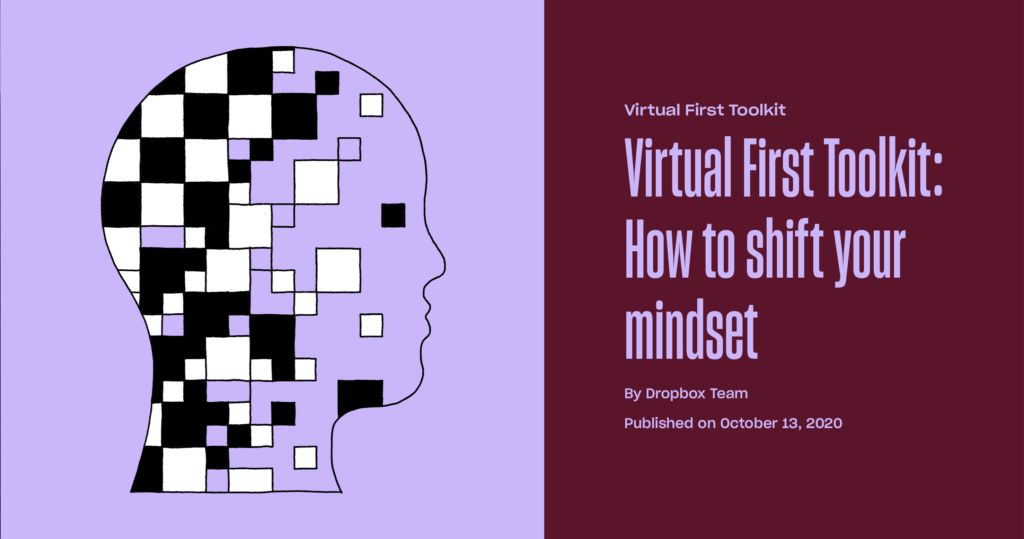Last year’s abrupt shift to remote work has dramatically changed the way many people work — marking the start of a new era that sees us rely more heavily on digital and virtual work. As a consequence, many companies were forced to adapt and find ways to help people and teams adjust to the change. Despite the sudden change in our habits, many studies have shown the advantages of working from home.
Like many companies, Dropbox decided to go fully “Virtual First” in 2021. Since then, they’ve been rapidly prototyping experimental processes, practices, and tools to help employees make the shift successfully — one of them being the Virtual First toolkit.
Dropbox’s Executive Editorial Director, Tiffani Jones Brown, shared with us what teams across Dropbox have learned in their first eight months of remote work. You’ll walk away with insights and tactical tips on staying effective, healthy, and creatively energized in our new era of work.
Tiffani will talk about how she’s helping lead Dropbox’s transition to Virtual First at Design Matters 21, which will take place in Copenhagen and online on Sep 29–30, 2021. Get your ticket now!
Let’s start by talking about creativity. What do you find influences and affects employees’ creativity in the workplace?
I can’t speak for all organizations, but on the teams I’ve been a part of, and at Dropbox more generally, a few things stick out:
- Clear problems to solve. Design schools teach that healthy constraints are essential to creativity. I think the same is true in organizations. Without a clear problem to solve, it’s easy to get stuck in tactics (so zoomed in, you forget to be creative) or blue sky thinking (so zoomed out, you forget what the goal is). So one thing we’re working at Dropbox is to frame problems more clearly. What are we here to do, really? Who are we doing it for, and why? Where do we want to take them from, to? What pain are we alleviating for people? I’ve noticed that when teams have a just-right mandate — a clear goal, but flexibility in how they approach it — they come up with more creative ideas.
- Space to focus. When the pandemic hit, many companies noticed a big increase in meetings and messages, as employees struggled to stay connected and feel relevant. With that came more after-hours work, and increased reports of burnout. Anyone who invents things will tell you they need uninterrupted blocks of time to do their best work — and yet many company cultures (not to mention technologies) seem designed to interrupt our flow. At Dropbox, we’re trying to combat this with “core collaboration hours” (CCH), a daily four-hour block of time where everyone is available for synchronous work. When we limit real-time work to CCH, we all get back four hours in the day to focus deeply, and think creatively. I’ve noticed a big shift in the quality of my thinking and writing since getting back more focus time — I have more ideas, and I’m able to dig into them more.

- A culture of creative experimentation. When the stakes are high or the people are stressed, it can be easy to latch on to the first sure-fire solution. But in my experience, companies that encourage a try-and-learn approach are more inventive, long-term. During the pandemic, we were all suddenly forced into a remote work setup. This meant we needed to rapidly prototype new ways of working in order to stay effective and maintain a sense of togetherness. At Dropbox, this messy experimentation produced all sorts of cultural innovations — Virtual First toolkits, monthly Fridays off to combat pandemic burnout, and enormous changes in our company habits (including drastically cutting down meeting time).
- An inspiring purpose. I worked with a co-founder once who was an incredible storyteller. He was able to express our company’s mission in an authentic and inspiring way that sparked imagination. I think teams benefit from a “why” that they connect to emotionally — one that’s true, but bigger than a tactical mandate. The why could be about the change you want to make in the world, or it could be something simple, like aspiring to greater beauty and craft. I think that when employees feel deeply connected to your purpose, they’re more likely to break out of work ruts, and put more heart and soul into the work, which is great for creativity.
What happens with this type of work when working remotely?
We’re still learning about the connection between how remote work impacts creativity at Dropbox. One thing we’ve heard from employees is that being remote is more conducive to independent creativity, like thinking critically about an idea or prototyping your own design. We’ve also heard that remote work is more challenging for serendipitous and collaborative creativity, which we used to get from team brainstorms and impromptu hallway conversations.

Overall, how do you create a company culture that promotes and supports creativity when working remotely?
This is something we’re still figuring out at Dropbox. I mentioned above how important focus is to creativity. But collaboration is also key! So there is a natural tension between needing time for deep work, and needing time for brainstorming and hashing things out together. Finding this balance can be tricky in remote work, because (at least at Dropbox) we are purposefully trying to limit unnecessary meetings, and because we have fewer chances for “cross-connections,” like swiveling your chair around to ask someone a question or finding a spark of inspiration when you’re chatting over lunch.
We’ve been experimenting with designing serendipitous interaction into how we work — like encouraging 5–10 minutes of unscripted chitchat at the beginning of meetings, randomly assigning people to breakout rooms during All Hands meetings so they can meet people they haven’t met before, and sharing videos of critiques asynchronously so people can stay connected in their own time. Since going Virtual First, we’ve realized we need to intentionally design cross-connections into how we work, since it no longer happens serendipitously.
If you want a more creative culture, I think it’s good to explicitly value, model, and reward creativity. I think it’s good to ask, What does ideal creativity look like for us? Who at the company really exemplifies that? How will we reward our most creative employees? When people can “see it,” it’s easier to “be it,” particularly when there’s an incentive attached.
More specifically, how can employees share and build on top of one another’s ideas when working remotely? What are the best methods or tools for this?
A few things I’ve noticed have been helpful at Dropbox:
Tools
- Digital whiteboarding tools like Miro, which let teams collaborate and brainstorm when they don’t have real whiteboards available
- Plain old-fashioned docs like Dropbox Paper, for drafting ideas, reviewing design, or having async 1:1s
Practices
- Burstiness. When teams agree to go online at the same time, they can use tools like Slack to bat ideas back and forth in short bursts (versus having to wait all day for a proper email response, or getting interrupted when they’re trying to focus).
- Writing 101. Virtual First means reading and writing alllll day long. So it’s a good idea to brush up on writing best practices, like keeping things concise (seriously, try cutting your docs in half!), putting your bottom line up top (BLOT) rather than burying it in a hard-to-read wall of text, and paying extra attention to your tone, since it’s harder to know what someone intends when you can’t read their facial expressions.

What are the biggest challenges in creating and maintaining a creative and productive work culture?
Being unclear on priorities, or having too many priorities, can really challenge an organization’s creativity and productivity. When you layer scattered priorities on top of a culture that’s already scattered by app pings and all-day meetings, you can imagine how hard it is to focus, or make space for generating novel ideas.
I also think there’s a delicate balance around offering clear direction, but letting people pursue the direction in their own way. For example, in our Virtual First research, we learned that many people wanted explicit guidance on how to behave in a remote work setup (For example: be online from 9:00 am–1:00 pm, avoid XYZ type of meetings, and block time to focus from1:00–5:00 pm — versus, “Block some focus time in the afternoon”). This surprised me, since I prefer a lot of autonomy in my work, but I think it makes perfect sense — between the pandemic and the sudden remote work setup, people were feeling stressed. Explicit guidance helped soothe the uncertainty, so people felt freer to explore and try things out.
What were the main lessons that Dropbox learned in going Virtual First?
We’re still learning! But one of the biggest lessons, for me at least, is how tricky it is for people to cut down on meetings. It’s taken us many months to change our company habits around this. I think that’s because most of us have been trained in a butts-in-seats mentality that prioritizes presence over impact — and attending meetings is the quickest way to demonstrate presence. Cutting down on meetings can also feel like “playing hooky” to some people, who worry they might get dinged for not showing up. For these folks, it helps to give explicit direction (literally: Keep meetings for the 3d’s — decisions, discussions, and debates. Handle status updates or FYIs over chat or email).
We’ve been having a researcher follow employees around to see how Virtual First is going. It’s been neat to turn human-centered design principles toward ourselves, and to use insights from this to update our practices around work.

What advice would you give to someone who is planning to make their company shift to a heavily creative work culture for the first time?
I would suggest reading Maker’s schedule, Manager’s schedule by Paul Graham, to get a sense of how a typical engineer, designer, writer, or inventor might need to arrange their day for max creativity.
I would also encourage them to reflect personally: When do you feel your most creative? What situations and structures support your best ideas? When do you tend to gain or lose energy? What is the biggest inhibitor to your creativity right now? I’d also extend these types of questions to your employees to understand which ways of working support their creativity. You could even pass out creative energy worksheets and see what you learn.
Finally, I would get really disciplined about stripping away things that don’t really matter. What’s the “signal” for your company — and what’s just “noise?” What’s one thing you’re doing that you could stop doing? In their exuberance to get creative, companies can sometimes add more stuff to employees’ plates. Before I added anything, I’d ask, “What are we going to take away?”

How about yourself — what tricks or techniques are effective to get access to your creative self and to stay creative and productive?
I feel the most creative when I’m taking care of myself well. For me, this means meditating daily, taking long walks to clear my head, getting my face away from the screens, and taking regular vacations. Many of my best ideas happen after vacations, so I really prize that time.
I also love working with people who are inspired and willing to take risks with me. I’m “energy-sensitive,” as the Californians say, so I can really feel it when someone else is energized. I love the feeling of getting excited about an idea together, or even having someone challenge my ideas in a sharp, intellectually stimulating way.
And is there any “creativity killer” that we all should steer away from?
I think that a heavy bureaucracy and overly complicated processes can really boost creativity. I’ve noticed that at times, process can become an end in itself, rather than a tool to enable creativity and focus. So, anytime you’re scheduling a meeting, or designing a new way of doing something, I would encourage you to ask: Does this remove complexity and open more space for deep work, or does it create work about work? Could it be simpler? Could we make it half as long/half as challenging?
Do you see the Virtual First trend in the future as well, or will it fade away with Covid-19, you think?
I don’t think Virtual First work, or remote work more generally, is going away anytime soon. There’s lots of research on this, but in sum: Any CEO who was reluctant to let employees work from home before the pandemic probably now realizes that it can be done. Studies suggest that many folks love flexibility and the work/life balance that remote work offers, and many of us have been surprised by how productive we are outside the office. So while some companies will definitely return to the office full-time, my guess is that many more will figure out more flexible arrangements for their employees — and that this will become a competitive differentiator.

Lastly, on a slightly different topic — we know that Dropbox cares about company values as well as work culture. How do you translate a company’s values into actionable practices in order to create the desired company culture?
This is a great question. We rewrote Dropbox’s values a few years ago. When we decided to go Virtual First, we realized we needed to embody these values in an all-new way. To get there, we developed a set of “from → to’s” that we shared in a Virtual First launch campaign that we ran throughout the month of April:
- From all-day syncs → async by default
- From busyness → impact
- From overload → focus
- From disconnection → belonging
- From consensus-driven → conflict mastery
We like this framework because it offers a set of high-level guardrails and constraints, yet allows employees to be creative in how they approach things. It means we’ve got 2,500 people all rowing in the same direction, using their own style.
We’ve also used it to inform the tools we’re developing to support our employees more generally as they work remotely. We launched a first draft of a Virtual First toolkit late last year. We’re excited to launch an updated, more actionable Toolkit soon!





